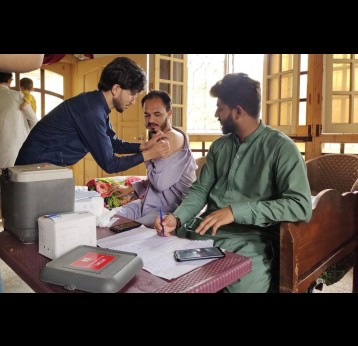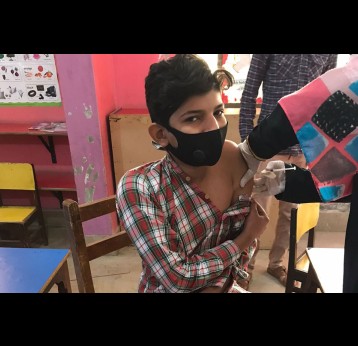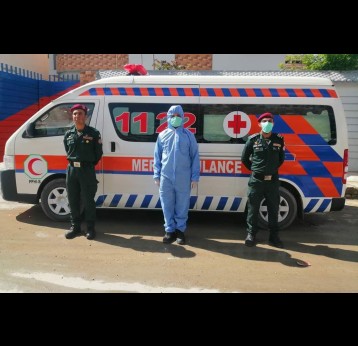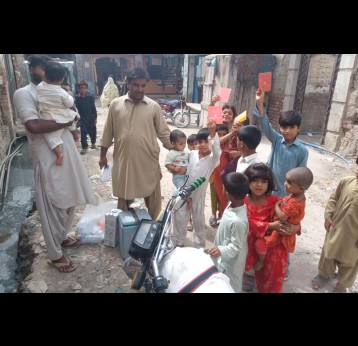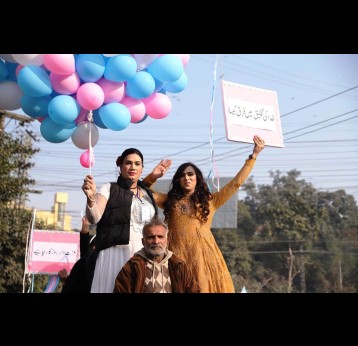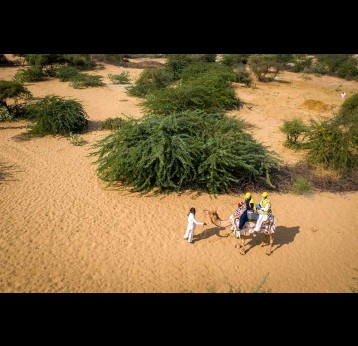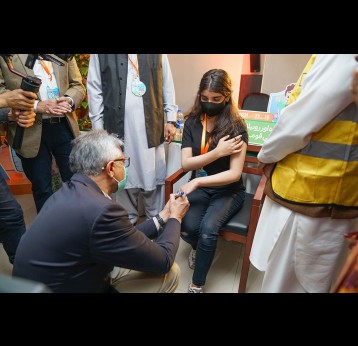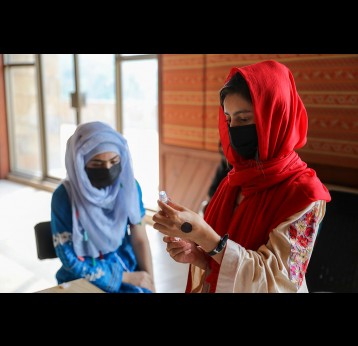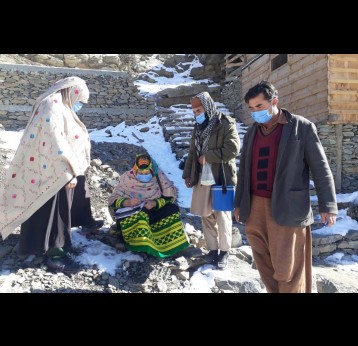Country Information
DTP3 / immunisation coverage
Grade of ConfidenceCommitments: Multi-year programme budgets endorsed in principle by the Gavi Board. These become financial commitments upon approval each year for the following calendar year.
Approvals: Total Approved for funding
Disclaimer: the boundaries and names shown and the designations used on this map do not imply the expression of any opinion whatsoever on the part of Gavi, the Vaccine Alliance concerning the legal status of any country, territory, city or area or of its authorities, or concerning the delimitation of its frontiers or boundaries. Dotted lines on maps represent approximate border lines for which there may not yet be full agreement.
This Gavi country data is made available under the Creative Commons BY 4.0 license: https://creativecommons.org/licenses/by/4.0/
Latest News
All News21 March 2022
Pakistan has vaccinated more than 80% of the adult population against COVID-19
In about 13 months, Pakistan has turned the vaccination tide, fuelled by the availability of adequate COVID-19 vaccine doses.
4 March 2022
Vaccine education: Rolling out COVID-19 vaccines to Pakistan’s schools
In Pakistan, educational institutions are convincing parents to get their children vaccinated against COVID-19 through motivational sessions and informative material.
25 February 2022
Amid uncertainty, Pakistan is winning the battle against Omicron
Pakistan's government is working on a robust strategy to contain the spread of COVID-19 by rapidly scaling up immunisation in rural parts of the country.
17 January 2022
Pakistan reignites polio vaccination drive
Civil society, media, local influencers, celebrities, religious scholars, and frontline workers are all reinforcing the Pakistan government’s fight against Poliomyelitis.
6 January 2022
COVID-19 means that Pakistani transgender people are even more marginalised
Trans rights organisations such as the Good Thinker Organisation are working to ensure that Pakistan’s transgender community recovers from the hardship that COVID-19 has wrought.
15 December 2021
Last month, Pakistan undertook one of its biggest-ever vaccination campaigns: 90 million doses of measles and rubella vaccine administered to 90 million children in just two weeks. #VaccinesWork was there.
12 November 2021
The campaign is one of the largest in history and will aim to reach over 95% coverage. Oral polio vaccine will also be integrated in the campaign to support polio eradication in Pakistan.
21 October 2021
A million a day: Pakistan’s COVID-19 vaccine campaign hits its stride
After a halting start to its immunisation campaign, Pakistan has shifted into high gear, now administering a million doses a day. #VaccinesWork spoke to national health leaders and spent a morning at a rural vaccination centre to find out what…
29 July 2021
“Saving the future of our children”: The women fighting polio in Pakistan
Pakistan is one of two countries where wild poliovirus remains endemic making it essential that the entire country supports the successful implementation of every polio campaign. Women play a critical role, often working at polio’s frontline.
Subscribe to our newsletter
Sources
| Name | Source | Date |
|---|---|---|
| Total population by country, by year, by age | United Nations, United Nations, Department of Economic and Social Affairs, Population Division. World Population Prospects. | 2019-07-31 |
| Total number of children surviving until 1 year old by country and by year | United Nations, United Nations, Department of Economic and Social Affairs, Population Division. World Population Prospects. | 2019-07-31 |
| UN Life births per gender | United Nations, United Nations, Department of Economic and Social Affairs, Population Division. World Population Prospects. | 2019-07-31 |
| Under-five mortality rate by country and by year | UNICEF CME Info http://www.childmortality.org/, Level & Trends in Child Mortality. Estimates Developed by the UN Inter-agency Group for Child Mortality Estimation (UNICEF, WHO, World Bank, UN DESA, UNPD). | 2020-09-01 |
| Infant mortality rate by country and by year | United Nations, United Nations, Department of Economic and Social Affairs, Population Division. World Population Prospects. | 2020-09-01 |
| GNI per capita, Atlas method (current US$) | World Bank, The gross national income, converted to U.S. dollars using the World Bank Atlas method, divided by the midyear population | 2021-07-01 |
| Antigen Coverage (%) by country and by year | WHO/UNICEF, Coverage refers to the number of administered doses divided by the number of eligible children to receive that vaccine. | 2021-07-15 |
| Percentage of districts with >=80% DTP3 coverage | WHO, Joint Reporting Form (JRF) | 2021-07-15 |
| Percentage of districts with <50% DTP3 coverage | WHO, Joint Reporting Form (JRF) | 2021-07-15 |
| Total Disbursed - Finance Disbursement | GAVI, Access software for Finance (in USD) | 2019-09-17 |
Grade of Confidence (GoC): The WHO and UNICEF estimates of national immunisation coverage (wuenic) are based on data and information that are of varying, and, in some instances, unknown quality. Beginning with the 2011 revision WHO/UNICEF describe their grade of confidence (GoC) in these estimates. As there is no underlying probability model upon which the estimates are based, WHO/UNICEF are unable to present classical measures of uncertainty, e.g., confidence intervals. Moreover, WHO/UNICEF have chosen not to make subjective estimates of plausibility/certainty ranges around the coverage. The GoC reflects the degree of empirical support upon which the estimates are based. It is not a judgment of the quality of data reported by national authorities.
|
Explanation of GoC values: |
|
| *** |
Estimate is supported by reported data [R+], coverage recalculated with an independent denominator from the World Population Prospects from the UN Population Division (D+), and at least one supporting survey within 2 years [S+]. While well supported, the estimate still carries a risk of being wrong. |
| ** | Estimate is supported by at least one data source; [R+], [S+], or [D+]; and no data source, [R-], [D-], or [S-], challenges the estimate. |
| * | There are no directly supporting data; or data from at least one source; [R-], [D-], [S-]; challenge the estimate. |

